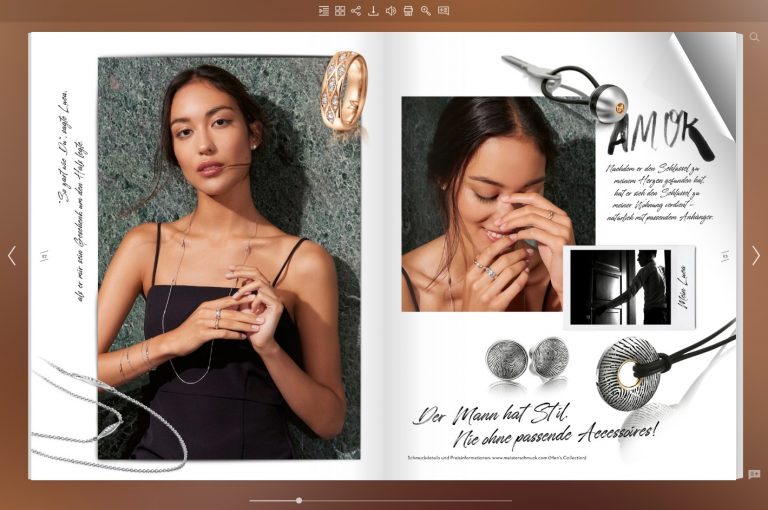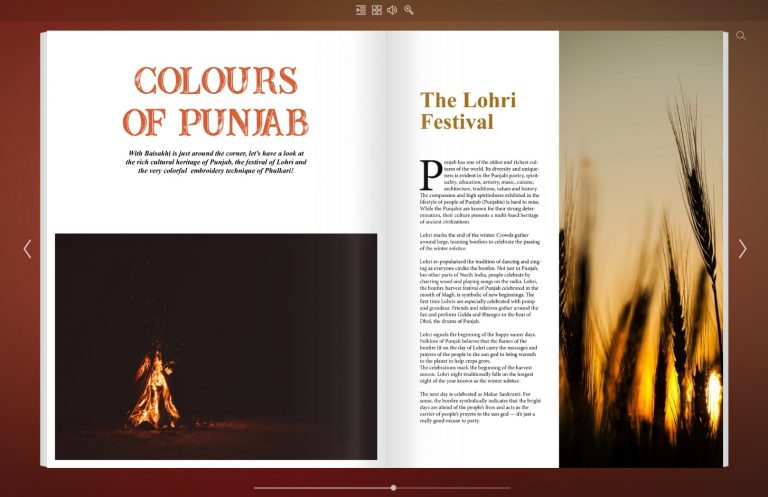Designing impactful magazine spreads – tips and trends
There's nothing that draws more readers' attention than a solid splash page or a double spread in a magazine. Panoramic photos of nature, shots of models or interviewees can instantly grab the readers and make their heads spin! The magazine spread is a chance to display your best shots and visuals - but many of our readers aren't experts on magazine layout design.
Luckily, we're here to help. From this text, you'll learn more about spread pages, how to use them to the full effect in your digital magazine layouts. We will explain how to use Publuu to showcase your photos and textures online, and how to apply these layout ideas to your interactive magazine design.
What is a magazine spread?
Imagine you have a book and it's 8 pages long. When you open it in the middle, you see pages 4 and 5 - that's the "centerfold" or the central spread often hosting the main image. But what the readers see as a spread is not the same as a spread for the printer.
Reader's spread: This is how you see the book when you're reading it. It shows pages in consecutive order, just like their page numbers. You start with page 1, so pages 2-3 are the first spread, 4-5 are the second, and so on.
Printer's spread: This is how the pages are arranged for printing, not for reading. It might seem confusing at first because the pages are not in reading order. But there's a reason for this! The printer's spread puts pages together in a way that makes sense for printing on a large sheet of paper. Then, that sheet is folded and cut to create the final book with pages in the correct reading order (reader's spread). On the same sheet of paper, you have page 2 and 7 and 1 and 8 on the back. These are printer's spreads.
Usually, printers' software creates printers' spreads based on your PDF designs but sometimes you need to work on your graphic design yourself. That's why many of our partners switched to online magazine design. Thanks to Publuu, you can create spreads that are twice as big as a regular spread, without the effect of a split page on readers' spread.
Publuu’s online flipbook example
View more online flipbook examples
MAKE YOUR OWN
Design strategies for compelling magazine layouts
Magazine layout is not just a matter of aesthetics. Elements like bold fonts, typefaces, font sizes, colors, and spacing are crucial to the readability and comfort of the reader. When applied properly, for example, in a double-page spread, these elements helps guide the reader's eye and build a clear hierarchy of information.
Start with making a grid
A grid-based structure provides order and consistency to the layout. It helps you plan elements on the page, providing balance and a stable, elegant look. The grid helps you maintain layout discipline, thanks to the proportions of certain elements. For example, photos can be 1/4th, 1/8 or 1/16th of a page, and a slightly larger photo will "look wrong" to the reader!
Rely on white space
White space is as important as text and images. Though it might seem that it's "nothing" or a part of minimalist design, in reality, it's very important. White space prevents chaos and page overload, makes text easier to read, and focuses attention on key elements. The text should "breathe" and not look squashed or directly touching images.
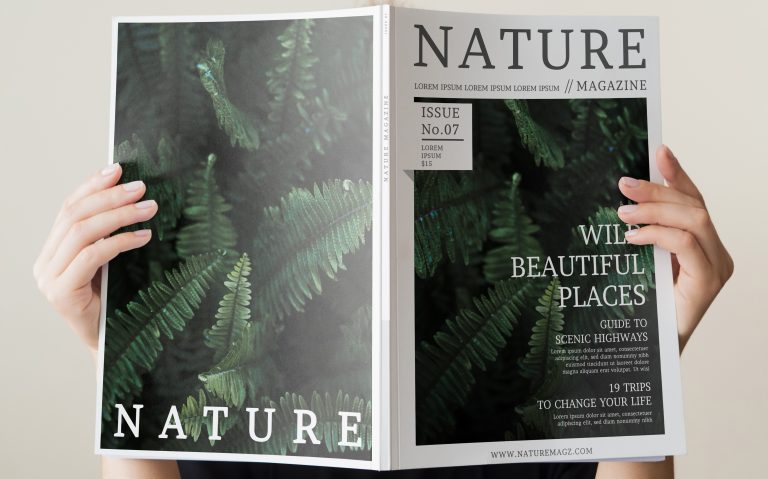
Rethink your editorial design
Avoid overwhelming the reader with walls of text or too many images. In general, when designing a page or a spread, think "What should the reader look at", and put a single strong focus element - whether a header or a bold illustration.
Choose fonts
The selection of fonts is closely related to the tone and content of the magazine. Serif fonts are usually considered more formal, while sans-serif typefaces work better for more casual texts - but that's not a strict rule. Care should also be taken to ensure that the typography is consistent with the brand identity, using the same typefaces, colors and other graphic elements throughout the magazine.
Leveraging interactive features to elevate your magazine
Publuu can help you transform your digital magazine into an interactive experience. Our innovative HTML-5-based magazine publishing software enables you to easily create features that can serve as the foundation for your projects.
With Publuu, you can create hyperlinks that lead to different sections of your magazine, allowing you to create an intuitive table of contents. Additionally, you can easily direct readers to external sites and other elements. To add a link, simply highlight the text and create a hotspot.
You can also integrate multimedia elements such as high-quality animated videos, audio clips, and photo galleries directly into your magazine. You can customize the appearance of the hotspot. For example, you can animate the photo of the person you're interviewing or showcase models wearing clothes on screen for readers of your fashion magazine.
Additionally, you can include interactive elements. Publuu enables you to integrate interactive features, such as polls, surveys, and clickable infographics to keep your readers engaged and gather valuable feedback. You can easily integrate these elements with hotspots by embedding them in your content.

Moreover, Publuu offers a variety of animated backgrounds to display your magazine, including options such as a starry sky or waves on the sea. This can help supplement your layout and make your magazine look even better!
Practical application – from theory to publishing digital magazines
Publuu can help you convert digital magazine into an interactive flipbook. When you have created your publication and designed the magazine cover, now you're ready for digital publishing - you can learn more in our Knowledge Base.
1. Save your file
Before you do that, make sure your magazine uses the PDF file format. Export your files as PDF and prepare the file to be readable.Also, double-check that the spreads are correct and that the document is suitable for presentation.
2. Upload your file
To upload a PDF as a digital magazine, please log in or register to your Publuu account. Simply enter your email address and create a password.
Once you have logged in, upload your PDF file and click on 'SUBMIT YOUR PDF'. Publuu will convert it during the upload process.
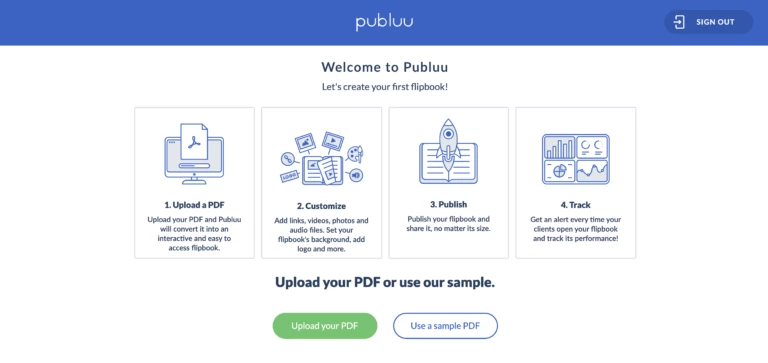
3. Customize your file
When you upload your PDF to Publuu, you'll gain access to our PDF editing tools. With these tools, you can modify the name and description of the digital magazine, set a background image, add logos and branding, and a slogan. If you need more information on these features, you can easilyrefer to Publuu's guides.
Once you've finished editing your flipbook, you can easily share it. Publuu offers various sharing options.
You can get a unique link to your flipbook from your dashboard and share it anywhere. Alternatively, you can share your flipbook directly with Publuu by clicking the 'EMAIL' button.
You can also embed it on your website. To add your magazine to your website, just click on the 'EMBED' button. You will see the code you should paste to have your flipbook displayed in a beautiful border.
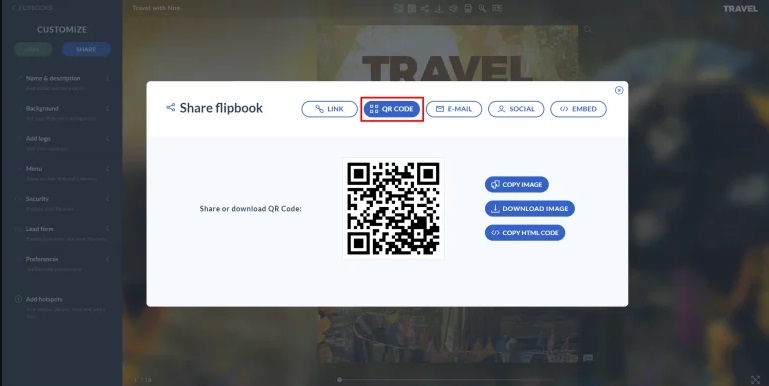
Real-world magazine examples and case studies
Here are some more magazine examples - you can find more digital magazines online on our website.
This magazine layout requires large spreads to showcase both advertisements and fashion advice. You can use it to display attractive pictures, a single landscape or two photos that draw the readers' attention.
This travel magazine uses spreads to showcase great photos, art and full-page images. Look how the background of the flipbook contrasts with these two dark spreads!
This magazine spread shows a beautiful table of contents - and interactive galleries, links and images help the readers navigate it!
Conclusion on magazine spreads
We hope this article has explained how to design great magazine spreads. By now you should know the difference between reader's and printer's spreads, and you should also know valuable design strategies such as using grids, whitespace, and clear information hierarchy.
To create beautiful magazines, you can use Publuu's interactive features such as hyperlinks, multimedia elements, and animations. With this knowledge, you can create magazine spreads that will not only capture readers' attention but also keep them coming back for more.
You may also be interested in:
Magazines - all you need to know
The power of interactive magazine
